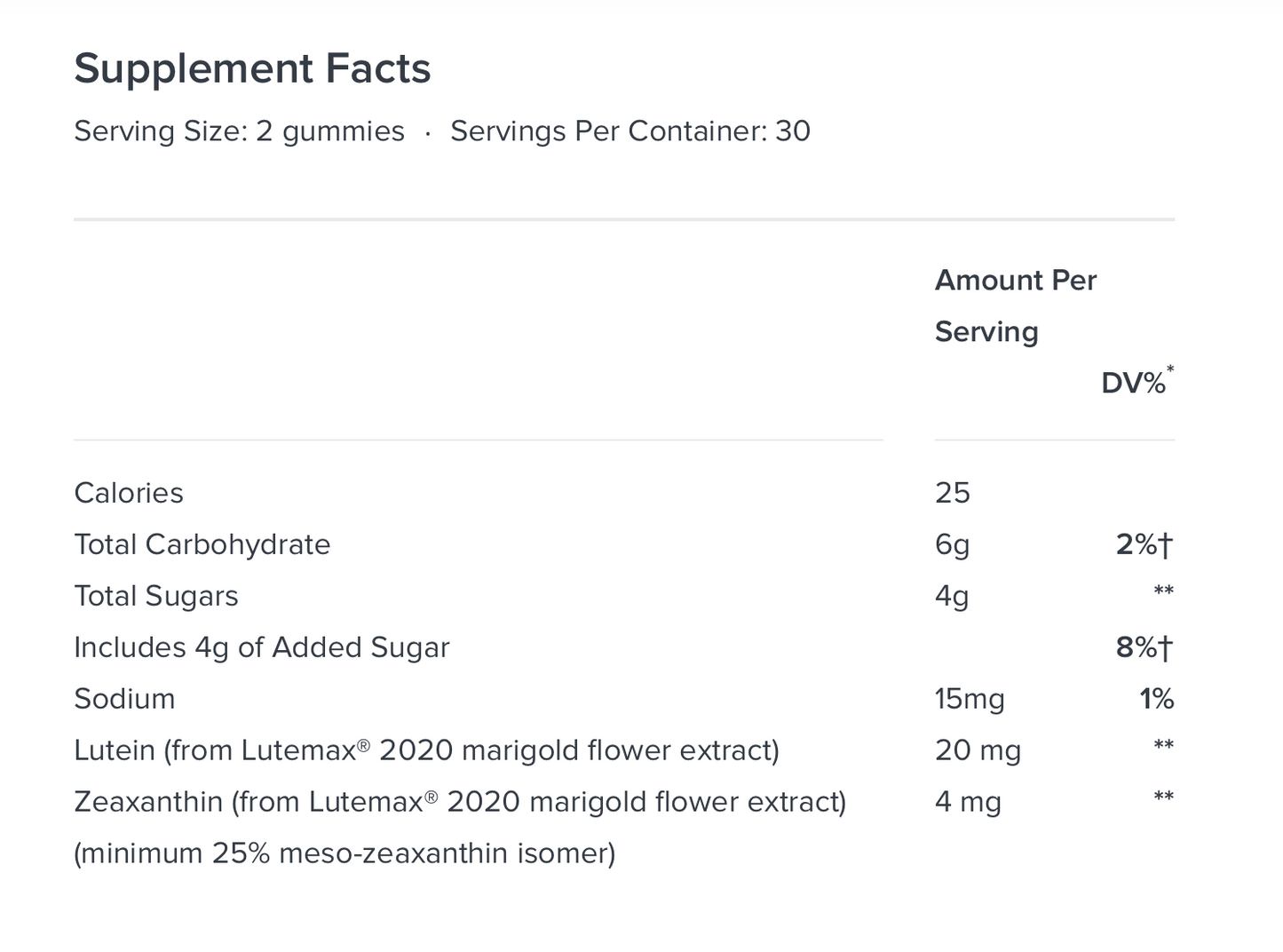Focus Blue Light Eye Health Support Vitamins- Mango Flavor Gummies
Focus Blue Light Eye Health Support Vitamins- Mango Flavor Gummies
Share
SKU:FV-217
542 in stock
Couldn't load pickup availability
We accept







This formula promotes healthy eye function by increasing macular pigment in the eye, and improves contrast sensitivity and glare to help the eyes quickly recover after use.
Focus Blue Light increases the protective layer of the eye called the MPOD by filtering high energy blue light. It is clinically proven to support clear, detailed vision in bright light and naturally comforts fatigued eyes from blue light and device use. Our formula is vegan friendly, with no animal products or byproducts and is proudly made in the US.
Features:
- EYE SUPPLEMENT TO HELP WITH BLUE LIGHT: Our formula is a natural filter of high energy blue light from digital devices and indoor and outdoor lighting. This formula promotes healthy eye function by increasing macular pigment in the eye. It improves contrast sensitivity and glare and helps the eyes quickly recover after use.
- LUTEIN & ZEAXANTHIN EYE SUPPLEMENT: Lutein and Zeaxanthin can help support eye health by helping shield and filter blue light by increasing your eyes protective macular pigment. Helps protect eyes and reduce strain from digital devices, blue light, and eye fatigue.
- BLUE LIGHT EYE HEALTH SUPPORT - Blue light can come from computers, smartphones, and tablets. Focus Blue Light Supplement can help protect your eyes from blue light emitted from digital devices.
- CAN HELP RELIEVE EYE FATIGUE AND IMPROVES MACULAR HEALTH - Our premium formula contains Lutein and Zeaxanthin, which can help combat digital eye strain and help alleviate eye fatigue and discomfort.
- SINGLE DAILY DOSE - 2 gummies daily or as directed by your healthcare provider. Mango flavored gummy for blue light support and increasing visual performance. Vegan friendly and made in the USA.
- Supply - Each Bottle is a 30 day supply, 60 Gummies per bottle
Ingredients
Lutein, Zeaxanthin, Raw cane sugar, organic tapioca syrup, water, natural flavors, citric acid, pectin, sodium citrate, and coconut oil.
FAQ's
Q: I spend at least 8 hours a day in front of digital screens. My eyes are tired, and my vision is fuzzy by the end of the day. Will your Blue Light formula help me?
A: Our Blue Light formula is clinically proven to support clear, detailed vision in bright light from inside or outside.
Q: How does it work?
A: Our Blue Light product increases the MPOD, the protective layer of the eye, by filtering high energy blue light and it supports better visual performance by increasing macular pigment in the eye.
Q: I have a problem with glare in my office. Will the Blue Light formula help with that?
A: Yes
Q: Will your Blue Light product help with my eye strain or fatigue?
A: Yes. It naturally comforts tired strained eyes from digital device use or exposure to sunlight.



